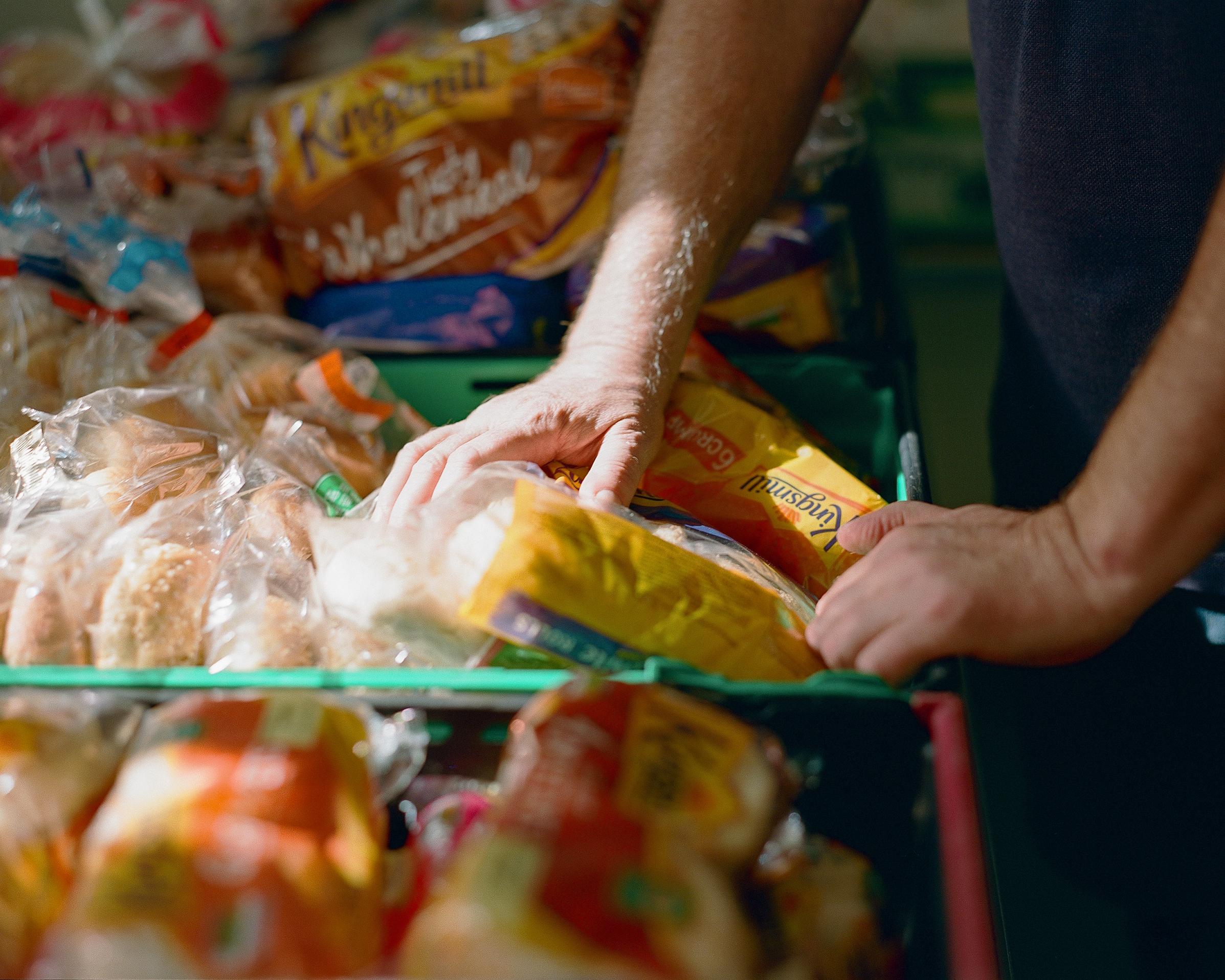Nearly 1 million people only £10 a week away from poverty as political leaders urged to set out their plans for tackling hardship ahead of tonight’s election debate
New analysis from JRF has found that in addition to the millions of people already in poverty, further millions are just on the edge.
As Rishi Sunak and Keir Starmer prepare to debate this evening, new analysis from JRF has found that alongside millions of people already in poverty, further millions are “teetering on the edge”. JRF is calling on the party leaders to set out what they will do to tackle this “stain on the moral conscience of our nation”.
3.2 million people in the UK are only £40 a week from poverty, equivalent to the entire population of Wales. This includes 700,000 children, 1.5 million working-age adults and 1.0 million pensioners1.
900,000 of these are only £10 a week away (including 0.2 million children, 0.4 million working-age adults and 0.3 million pensioners). This is on top of the 14.2 million people already in poverty in the UK, of which 4.2 million are children2.
It has now been almost 20 years since the last prolonged period of falling poverty3. In May 2024, 7.0 million households reported that they had gone without essentials like showers, toiletries or adequate clothing in the last six months, or had gone hungry or cut or skipped meals in the last 30 days4.
Large numbers of people are also close to deep or very deep poverty lines, meaning they are living on incomes less than 50% or 40% of the UK average respectively5:
- 3.0 million people already living in poverty in the UK are only £40 a week away from falling into deep poverty.
- Around 700,000 are only £10 a week away from deep poverty.
- 1.1 million people already in poverty are only £20 a week away from very deep poverty. Around 500,000 are only £10 a week away.
- 9.7 million people already live in deep poverty in the UK. Within this, 6 million people already live in very deep poverty.5
Paul Kissack, CEO of the Joseph Rowntree Foundation, said:
“Such high levels of hardship, with millions experiencing poverty and millions more teetering on the edge of it, are a stain on the moral conscience of our nation.
“It has been six prime ministers since this country last made sustained progress on reducing poverty. During that time we've seen a sustained rise in the number of people in deep poverty, with hardship and destitution growing even faster. Whoever is Prime Minister after July 4th must make reversing this dismal trend a priority.
“Our political leaders must be specific and ambitious about how they will tackle poverty. But so far there hasn’t been anything like the level of urgency from either Rishi Sunak or Keir Starmer that we need to see. Pointing to future growth as a panacea just won’t cut it.
“Tonight’s debate is a chance for both leaders to set out their plans and demonstrate they are serious about addressing hardship. Failure to act is a political and moral choice, and one they should expect to be judged on.”
Notes to editors
Our main poverty measure is based on classifying people as being in poverty if their income (adjusted or equivalised for household size and composition) is less than 60% of the UK average after housing costs have been deducted. To calculate poverty proximity, we look at each household’s gap to the poverty line for their household type. The gap is based on unequivalised incomes, so for all households within £10 of the relevant poverty line an actual £10 reduction in income would mean they move below the line. Similar results are found when equivalised income are used. Statistics by gap and broad age category are given below:
Poverty proximity in 2022/23 Gap to poverty line (£ per week)
Total population (millions)
Children (millions)
Working-age adults (millions)
Pensioners (millions)
In poverty
14.2
4.2
8.1
1.9
Within £10 of the poverty line
0.9
0.2
0.4
0.3
Within £20 of the poverty line
1.7
0.4
0.8
0.5
Within £30 of the poverty line
2.5
0.6
1.2
0.8
Within £40 of the poverty line
3.2
0.7
1.5
1.0
Within £50 of the poverty line
4.0
0.9
1.9
1.2
More than £50 from the poverty line
48.4
9.2
30.5
8.7
Deep poverty proximity in 2022/23 Gap to deep poverty line (£ per week)
Total population (millions)
Children (millions)
Working-age adults (millions)
Pensioners (millions)
In poverty
9.7
2.9
5.8
1.1
Within £10 of the poverty line
0.7
0.2
0.4
0.2
Within £20 of the poverty line
1.4
0.4
0.7
0.4
Within £30 of the poverty line
2.2
0.5
1.1
0.6
Within £40 of the poverty line
3.0
0.7
1.5
0.8
Within £50 of the poverty line
3.8
0.9
1.8
1.1
More than £50 from the poverty line
53.3
10.7
32.9
9.7
Very deep poverty proximity in 2022/23 Gap to very deep poverty line (£ per week)
Total population (millions)
Children (millions)
Working-age adults (millions)
Pensioners (millions)
In poverty
6.0
1.6
3.9
0.6
Within £10 of the poverty line
0.5
0.2
0.3
0.1
Within £20 of the poverty line
1.1
0.3
0.6
0.2
Within £30 of the poverty line
1.6
0.4
0.8
0.3
Within £40 of the poverty line
2.2
0.6
1.1
0.4
Within £50 of the poverty line
2.8
0.7
1.4
0.6
More than £50 from the poverty line
57.9
12.1
35.2
10.6
- See DWP’s Households Below Average Income series for further details.
- Poverty last fell consistently during the first half of the last Labour administration (between 1999/2000 and 2004/05).
- See JRF's news release 'Politicians must urgently address “relentless reality” of hardship as 7 million households continue to go without essentials'.

This news article is part of the deep poverty and destitution topic.
Find out more about our work in this area.